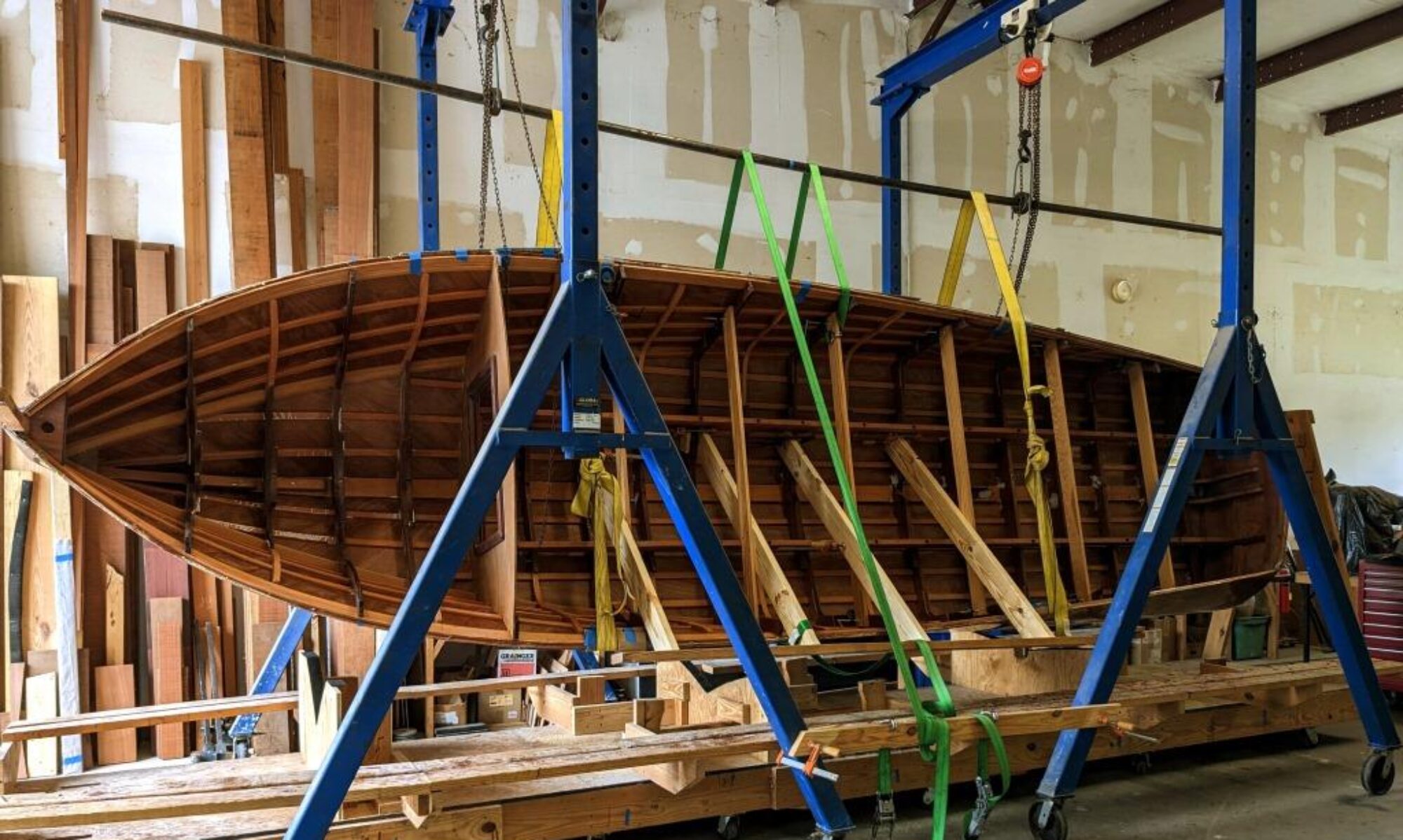
Our final layer of planking will run longitudinally to look like traditional carvel planking in this build. That’s where the longitudinal mahogany planks are laid edge to edge and screwed to the underlying frames. When it’s complete, you end up with a very smooth, fair hull with seams so tight you can’t even feel the transition from one plank to the adjacent one. Well, that’s the ideal, anyway. These boats worked because the seams tightened up after the boat was in the water a few days–tight enough to keep most of the water out. And while it’s helpful to remember we’re building a boat and not a Steinway piano, with a little know-how and patience, we can get reasonably close to that ideal. We’re going deep into the weeds in the next couple of posts so bear with me. Continue reading “Fitting the Mahogany Layer on the Palm Beach 22”


